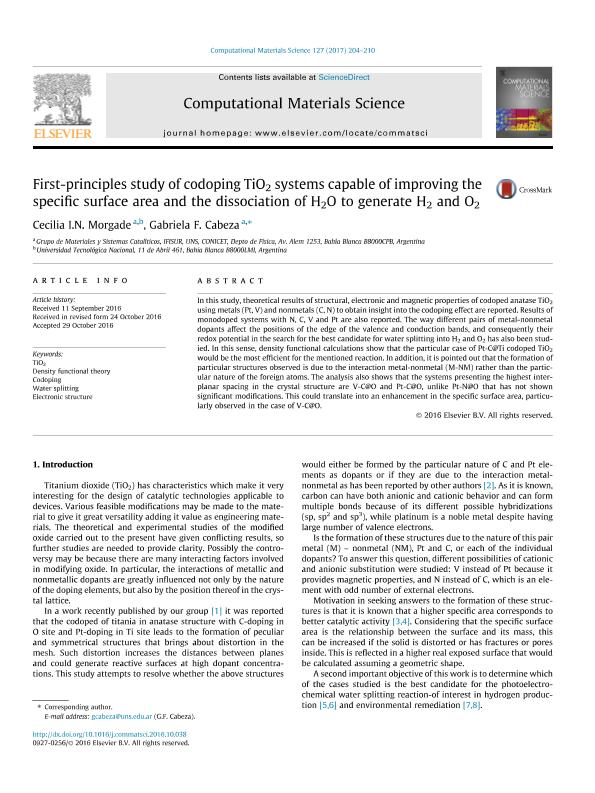Artículo
First-principles study of codoping TiO2 systems capable of improving the specific surface area and the dissociation of H2O to generate H2 and O2
Fecha de publicación:
02/2017
Editorial:
Elsevier Science
Revista:
Computational Materials Science
ISSN:
0927-0256
Idioma:
Inglés
Tipo de recurso:
Artículo publicado
Clasificación temática:
Resumen
In this study, theoretical results of structural, electronic and magnetic properties of codoped anatase TiO2 using metals (Pt, V) and nonmetals (C, N) to obtain insight into the codoping effect are reported. Results of monodoped systems with N, C, V and Pt are also reported. The way different pairs of metal-nonmetal dopants affect the positions of the edge of the valence and conduction bands, and consequently their redox potential in the search for the best candidate for water splitting into H2 and O2 has also been studied. In this sense, density functional calculations show that the particular case of Pt-C@Ti codoped TiO2 would be the most efficient for the mentioned reaction. In addition, it is pointed out that the formation of particular structures observed is due to the interaction metal-nonmetal (M-NM) rather than the particular nature of the foreign atoms. The analysis also shows that the systems presenting the highest interplanar spacing in the crystal structure are V-C@O and Pt-C@O, unlike Pt-N@O that has not shown significant modifications. This could translate into an enhancement in the specific surface area, particularly observed in the case of V-C@O.
Palabras clave:
Codoping
,
Density Functional Theory
,
Electronic Structure
,
Tio2
,
Water Splitting
Archivos asociados
Licencia
Identificadores
Colecciones
Articulos(IFISUR)
Articulos de INSTITUTO DE FISICA DEL SUR
Articulos de INSTITUTO DE FISICA DEL SUR
Citación
Morgade, Cecilia Ines Nora; Cabeza, Gabriela Fernanda; First-principles study of codoping TiO2 systems capable of improving the specific surface area and the dissociation of H2O to generate H2 and O2; Elsevier Science; Computational Materials Science; 127; 2-2017; 204-210
Compartir
Altmétricas




